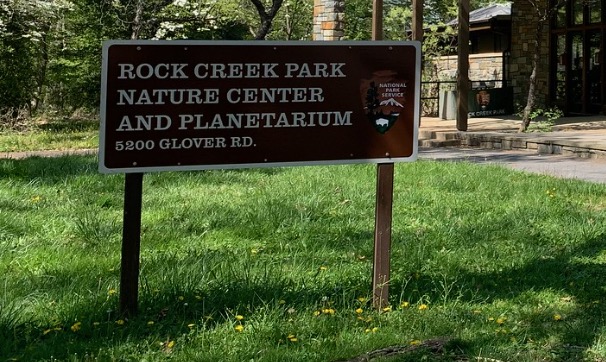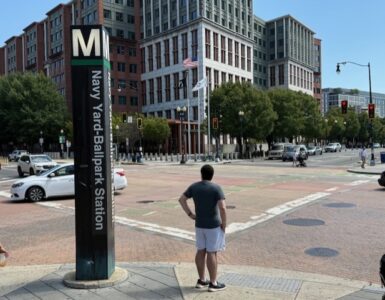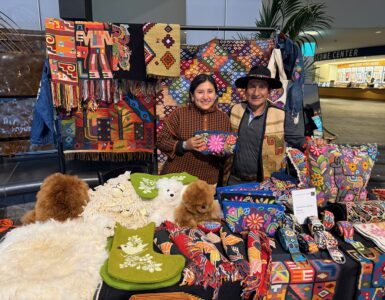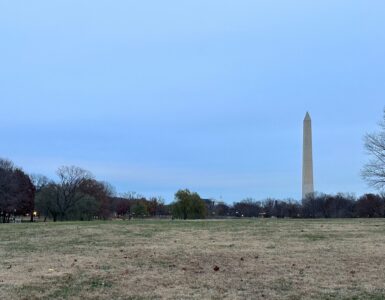Among Rock Creek Park’s natural beauty is an ugly past rooted in racial segregation and native displacement. The Rock Creek Conservancy is working to shine a light on that past.
The conservancy hosts a program series, “Race, History, and Rock Creek,” to create transparency about the park’s history. The program aims to be a starting point to better understand how the park’s past affected equity and access, according to the organization’s website.
Jeanne Braha, the executive director at Rock Creek Conservancy, said the series has received a great response from the community as it creates awareness among members.
“[The series] has allowed people to think about how they want to make the park better for the community,” Braha said. “People also appreciated sort of putting the park in context, as it doesn’t only exist in a vacuum.”
On Nov. 16, the conservancy hosted a panel discussion with author Rolf Diamant and Rock Creek Park Acting Superintendent Brian Joyner to discuss insights into the history and origins of the National Park Service and Rock Creek Park. The panelists provided an information session to the attendees and opened the floor to questions right after.

Other panels included discussions on topics such as segregation in the park, the history of jazz at Carter Barron Amphitheater, and LGBTQ+ Pride celebrations in the park.
Braha said the series started as a way to keep people connected to the conservancy’s mission and work to preserve the area’s cultural resources during the COVID-19 pandemic.
“Most people, when they think about Rock Creek, they think about the forest, hiking, and natural resources,” she said. “We want to teach people about the cultural resources and change the dynamic.”
Eve Cruz, a resident who frequently exercises at Rock Creek Park, said she didn’t know about the program series but believes it is a good first step in educating people.
“I think it shines a light on the history Americans need to learn more about,” Cruz said. “As an Indigenous woman myself, I am happy these conversations are happening, but there is still a lot of work to do.”
Rock Creek was established by Congress in 1890, according to the National Park Service. It is NPS’s oldest urban park.
Karl Jacoby, a professor of history and ethnic studies at Columbia University, said the popular conception is that national parks are pristine, untouched nature, but, historically, national parks are “created wilderness.”
“What I mean by parks creating wilderness is that, to create these ‘unpeople landscapes,’ you have to remove people,” Jacoby said. “Almost in every case of all national parks, all the people removed were Indigenous, Native communities.”
For millennia, American Indians quarried Rock Creek until European Americans claimed title to the land in the late 1600s, according to the National Park Service website. After 40 years of contact with the Europeans, the Native population in Rock Creek became scarce.

In the 20th century, the District segregated Black people in its recreation facilities. This included Rock Creek Park, as it was one of the first federally managed areas, according to a study by Prologue D.C.
Jacoby said people need to recognize this history to understand why certain communities don’t feel welcome at national parks.
“I think the reason that it’s jarring for people to learn this history is because we think about national parks as kind of the highest aspiration,” he said. “I think we think of our history as being a very ‘sanitized’ history.”
Lorenzo Eugenio, an Indigenous college student from the area, said he has never stepped foot in Rock Creek Park, as he doesn’t feel welcomed in the space, but appreciates the efforts the conservancy is making.
“I think you got to recognize the history and I appreciate what they’re doing,” Eugenio said. “My people were pushed out of it for the longest time. I’m glad they’re shining a light on it among other things.”

Maurice Federico, a resident who enjoys meditating at Rock Creek, said that, as a person of color, he is aware of the history, but he has also “made peace with the land.”
“I found peace here once I recognized the facts and how it connected to my story,” he said. “ I hope people can find the same comfort. I hope they can reclaim what’s theirs.”
Braha said the goal is to use Rock Creek to bring people together, as the area is a shared value in the community.
“Historically, Rock Creek has been used to divide communities,” she said. “We want to make sure people know the past so that we don’t repeat it.”
The conservancy hosts the program series virtually via Zoom every few months. You can register for the panels on the organization’s website.















I DO NOT AGREE WITH THIS COMMENT I ABSOLUTLY HATE THIS TAKE IT DOWN THIS PARK IS CONTAMINATED AND ITS SO DISGUISTING THE LAST TIME I WENT TO THIS PPARK THEY RAN ME OVER WITH A BIKE AND A CROCODILE ATE MY DOG AND CAT WHEN I WAS WALKING MY FISH AND THEN MY TOUTOR TOLD ME TO GO KILL MMY SELF AND I DID SO NOW IM DEAD. I HATE THIS PARK